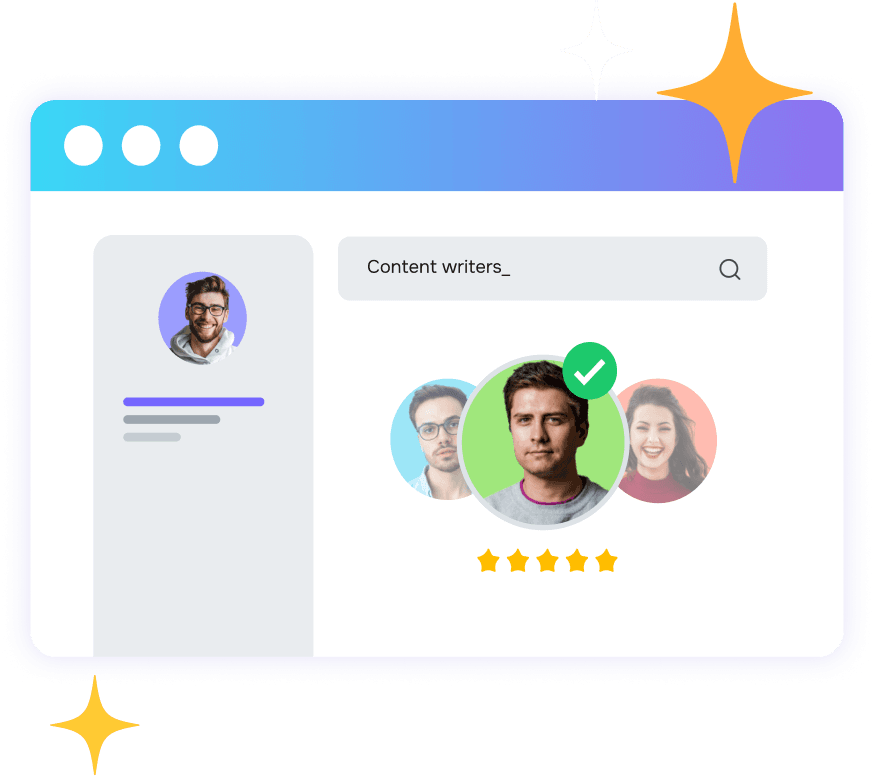Getting Down To The Basics of Content Marketing With Amica Garber
Five years ago, content marketing was associated with SEO, the number of blogs you can put out, analytics and much more. But in literally just half a decade, the very definition of content marketing has rapidly evolved right before our eyes. Content has now become a strategic unit within any organization - right from the top multinational corporation to a small homegrown business. It is truly the king.
Amica Graber, Senior Marketing Manager, Retention Content at Hims & Hers Inc talks to Rishabh Shekhar, Co-Founder and COO at Pepper Content, where they discuss content marketing for the Metaverse, how companies can outsource their content, and much more.
Here are some excerpts:
1. Tell us a little about your background and story.
My content marketing journey began when I was a journalist in London. I started as a writer with a background in creative writing around 2008 and by 2015, I was working in content marketing when it was just new and flourishing. While things were easier then, it was also a little more difficult since there weren’t many tools and insights into what we were doing.
A little later, I joined a SaaS company in San Diego as a content strategist, moved up the ranks, and eventually worked for an agency for a little while before taking on a content leadership role. That’s where I worked in content operations and strategy, which is my true passion. Today, I am the Senior Marketing Manager, Retention Content at Hims & Hers Inc.
2. How do you market content for something like the Metaverse - something that people aren’t aware of or understand yet?
The Metaverse opens up a whole new avenue of opportunities for content marketing. Here, you’re really moving from 2D to 3D to 4D complete with immersive experiences. It’s a new channel that offers a completely different sales environment, which in some ways is pretty familiar. It emerges from the physical and digital spaces that we've used in Web 2.0.
We're talking about two tracks here. In Web 3.0, we are really bringing ourselves into the story. Customer centricity is always at the heart of what I do as a content marketer. And the Metaverse is so interesting because you physically take the customer and put them into your story.
You can build and brand a storefront that they can be in from their front room. You can create customer personalization. So I think it's a fantastic opportunity for content marketers to really think about how they can break down this fourth dimension of communication to connect with people in a really new and exciting way. That’s track one.
Track two is all about promoting the content, talking about it, and getting people excited about it. Everyone has an understanding of the Metaverse now, but it is still subjective. So I think laying the ground is important - you cannot bombard people with a lot of information at once.
At TouchCast, we created explainer videos and a podcast. We did a series called 'Myth Busting the Metaverse' on TikTok and YouTube. We’ve looked at some of the common misconceptions and reexamined them with a critical focus.
New technology requires a bit of a gentle hand because it can be interpreted in a lot of different ways when nobody has a firm definition of what it exactly is.
3. How have you seen analytics and KPIs change within organizations, and how do you benchmark your own success?
When I first started my career in content marketing, it was really just to sort of fill up space. There wasn't any sort of KPIs; it was all about drawing attention.
But slowly, we started putting the customer at the center of the journey, and we saw those conversions start to pick up and created a framework based on our successes. I think the first real trick of it is really understanding the baseline for the company. What are they looking for? You can assume that you want more web traffic or you might want conversions a certain way, or you want to draw leads. But everyone has slightly different versions of success.
Your first 90 days of a new role or content opportunity is really understanding what success looks like for the client, what your success looks like, and how you marry those together.
Content marketing is almost an omnichannel experience now. There are different touch points, and different customers are going to consume different types of content. There's no one-size-fits-all, but if you look at your ideal customer personas, your colleagues and you talk to them, interview them, spend time with them, and find out you know, how they like to consume the content, you can then create a properly aligned customer journey.
4. What would you recommend to people who are starting to manage content marketing mandates and setting budgets for the first time?
The foremost aspect of prioritizing content marketing is building consensus that this is a valuable area to invest in. That's always a massive challenge especially when you know you're not going to see results for six months. In the beginning, the one-to-many approach is most effective.
Typically we have a main content asset, for example, an interview with your founder in the form of a video. You could use the audio from that to create a podcast or use snippets for social media or use the transcript for a blog.
We've done that at TouchCast; we've turned what podcast guests have said into cheat sheets for SEO ranking and turned some content into images for social media. So out of one main piece of content, you've now got five different pieces on five different channels.
So that's one way to maximize what you're spending money on in the beginning, because while it might take six months for those keywords to rank you've already got ready content for social media, TikTok, and YouTube.
Creating content that's useful, customer-centric, and speaks to the purpose of your business is much more important than spending money on creating 50 pages that might rank in the beginning, but in the long term, don't provide a lot of value.
5. What is your ideology around outsourcing?
Outsourcing is quite interesting right now. On one hand, you have an influx of AI tools that promise long-form content. And it's great, especially if you can plug in a keyword and have a 1000-page article come back without minimal effort. But then those articles don't read for humans.
If you want to connect with your reader, your content and brand messaging have to have a human element because that's where the magic really happens.
I think you're never on an island when it comes to content. There will always be experts in areas that are not necessarily your strong suit. Having those different voices and opinions in the mix makes your content richer and more appealing. Of course, it's all dependent on budget. You can be part of a huge team with several people in different content departments - or you can be the only content marketer and have to learn to leverage outside resources to build the same momentum as you would get with those bigger teams.
6. What is one thing most content marketers get wrong early in their careers?
Content marketing is both creative and tactical, and in order to stay tactical, you have to stay creative. If you started out as a journalist and you love writing, keep writing. Keep reading because the more you read, I really believe the better you write. Staying creative 24x7 is the job and there are all sorts of lurches in the content cycle, that can saturate creativity. So indulge in activities that keep that creative spark alive because I think when content starts falling flat is when you kind of lose your way.
7. What would your ideal content marketing stack look like?
Data is the north star of a content strategy. Without data, you're essentially throwing darts in the dark. You really want to know where your customers are, what pages are getting traffic, and what people are looking at. You can check search and Semrush and keywords, but they don't tell you the whole story.
You need to go in-depth and look at what pages have the most views, and what your customer is more interested in, and with these different data points you can get a better understanding of your customer and buyer persona.
Then you have the content strategy where you think about what content is going to serve the needs of your customer. Where are their pain points? What are their areas of friction, and how can you relieve that?
In a nutshell, it starts with Google Analytics and moves onto Semrush, AI tools for content and for organization and restructuring. Once you align all of this in a matrix, you can create something that people will remember.

